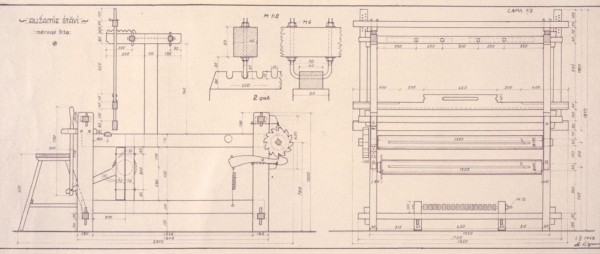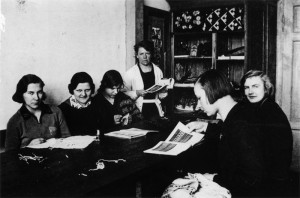A masterpiece from the ruins of war
This loom was built to the directions of professional weaver Elga Kivicka in 1946 in the Fischbach Latvian Displaced Persons camp. Materials scavenged from bombed-out buildings were used in its construction. Elga taught other camp inhabitants how to weave on the loom, and also wove herself, making folk costumes, participating in exhibitions, and occupying herself during the long hours of unemployment experienced whilst living in the camp. The threads for weaving were often obtained from unravelled pieces of fabric.
When Elga left for England, she left the loom to an acquaintance, Kārlis Gulbergs, who later transported it to Australia in a large wooden chest. On arrival in Sydney, he sold the loom “for a song” to Latvian Elza Siliņa, who used it to weave decorative pillows and home textiles.
Later, the loom came into the ownership of artisan Anna Apinis, who had studied at the School of Applied Art in Liepaja, Latvia and was living in Sydney at the time. Anna also taught her daughter, Anita, to weave. Anita has continued this tradition, weaving folk costume fabrics and even publishing a book in English about Latvian weaving techniques and traditions.






